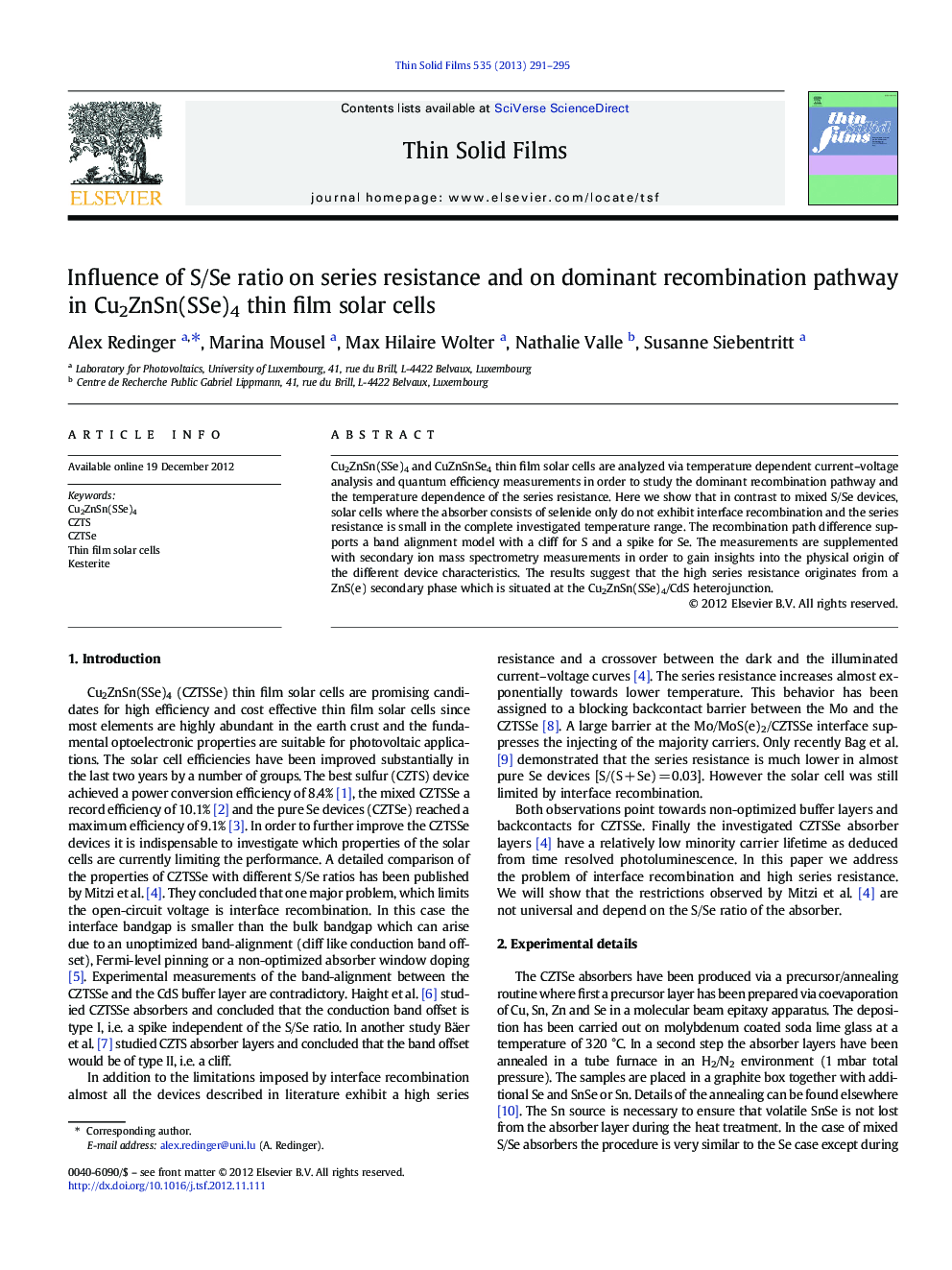| Article ID | Journal | Published Year | Pages | File Type |
|---|---|---|---|---|
| 1666207 | Thin Solid Films | 2013 | 5 Pages |
Cu2ZnSn(SSe)4 and CuZnSnSe4 thin film solar cells are analyzed via temperature dependent current–voltage analysis and quantum efficiency measurements in order to study the dominant recombination pathway and the temperature dependence of the series resistance. Here we show that in contrast to mixed S/Se devices, solar cells where the absorber consists of selenide only do not exhibit interface recombination and the series resistance is small in the complete investigated temperature range. The recombination path difference supports a band alignment model with a cliff for S and a spike for Se. The measurements are supplemented with secondary ion mass spectrometry measurements in order to gain insights into the physical origin of the different device characteristics. The results suggest that the high series resistance originates from a ZnS(e) secondary phase which is situated at the Cu2ZnSn(SSe)4/CdS heterojunction.
► CZTSSe devices have high series resistance and dominant interface recombination. ► CZTSe-devices have low series resistance and dominant recombination path is bulk. ► The results suggest different conduction band-alignments for CZTSSe and CZTSe. ► Origin of high series resistance: ZnS(e) secondary phase at the heterojunction.
